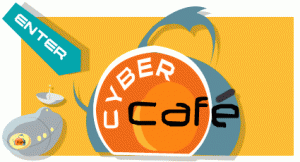E-Safety
What happens for the children at school?
Within school, children are encouraged to maximise the benefits and opportunities that technology has to offer. We ensure that children learn in an environment where security measures are balanced appropriately with the need to learn effectively. At Thurton, we aim to equip children with the skills and knowledge of how to use technology appropriately and responsibly.
We teach children how to recognise the risks associated with technology and how to deal with them, both within and outside the school environment. We do this through three main areas: CONTENT, CONTACT and CONDUCT.
- We use NSPCC and CEOP resources, including video resources to enhance our message of how to keep safe.
- All pupils and their families are reminded annually of the school’s Online Pupil Code of Conduct (see link below).
- We are part of the NSPCC Speak out Stay Safe Programme for schools
- All the children are involved in Safer Internet Day in February.
- Every second year, the children in years 5/6 make a “play in the day” about internet safety which they share with the children, members of the community and families in the afternoon assembly. This allows the children to explore in an age related way appropriate safety issues for themselves and other children within school. Children understand who to and how to report any issues.
- There is an ESafety display board outside the Headteacher office, so children and families have an opportunity to be reminded of what was learnt from their ESafety activities and how to keep safe both at school and home.
Family E-Safety briefings:
The school works closely with all families and offers an annual E-Safety briefing which is part of the Autumn Term’s ‘Meet the Teacher’ meeting. This briefing informs families of simple steps to take at home, any new online issues (such as Snap Map) and of websites which they can use to access up to date information. Guidance and leaflets for parents/carers are also available in school from the E-Safety notice board area, which is located outside the Headteacher’s office. See our Parents pages for more on how to keep your child safe online.
Staff:
Yearly, the staff systematically review and develop our online e-safety policy. Staff also attend training and briefings organised through external providers. This includes CEOP accredited and National conferences about Child Online Internet Safety run by CEOP, in order to keep up to date with new developments. This ensures that the school can continue develop their own, parents and children’s understanding of keeping safe online.
Staff are required to sign and follow our ICT Staff Code of Conduct.
The members of staff for E-Safety are Mr Barber and Mrs Scorey.
Pupils:
- Are taught about social networking, acceptable behaviours and how to report misuse, intimidation or abuse through our online safety curriculum work.
- Pupils are required to sign and follow our [age appropriate] Online Pupil Code of Conduct.
There is a clear outline of conduct that is expected of the children and they know of how to report if there are any issues.
Policies: the school has a E-Safety policy and procedures which are regularly updated and ratified by governors. The E-Safety policy also have an Acceptable Usage Policy which is signed by pupils, parents and staff on a yearly basis, to ensure that it contains the most up to date information possible. Online ESafety Safety Policy
Education: the curriculum is flexible, relevant and engages pupil’s interests.
Infrastructure: the school uses the Norfolk County Council recommended filtering service through BT and it has age related filtering that is activity monitored.
At home, sometimes children can be given unsupervised access to the Internet. This, potentially, allows them to access all kinds of society (both good and bad) and bring them virtually into their homes.
Here are some tips and useful links to help you to keep your children safe online:
- Explore e-safety sites – if you click on any of the above links, these will take you to site which can help you with E-Safety.
- Facebook / Bebo / Myspace – Many of these sites have a minimum age limit of 13, so our pupils should NOT be using them. They do not offer the same levels of protection as Skoodle, allowing children to communicate with anyone.
- Keep your computer in a shared area – Talk to your child about what they are doing online and, if possible, set up your computer in a shared area at home so that you can all share in the wonderful sites that are available online
Some links to more information:
- Think U Know – containing internet safety advice for those aged from 5 to 16, along with parents and teachers, this site is produced by CEOP (the Child Exploitation and Online Protection Centre).
- NSPCC – fabulous website for parents and children – includes Net Aware and Share Aware resources and games.
- Vodafone Parents – Vodafone have lots of fantastic practical advice for parents. You can also read their ‘Digital Parenting‘ magazine.
- Internet Safety Zone – Look in the ‘Under 13s’ section for useful safety advice and information.
- Kidsmart – An award-winning internet safety programme for children.
- Know IT All – lots of useful advice for keeping yourselves and your children safe on the Internet.
- Bullying UK – Information and advice about bullying for children, parents and schools.
- Kidscape – An organisation which helps to prevent bullying and child abuse.
- Childline – ChildLine is the free helpline for children and young people in the UK.




